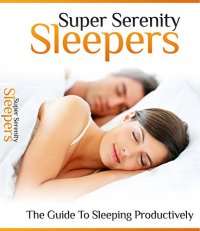Sleep is defined as a state when the motor activity and senses are suspended; there is partial or total unconsciousness, and the voluntary muscles of the body are not active. It is more reversible than coma or hibernation, yet responds less to any kind of stimulus than silent wakefulness. Sleep is very important, as it is the rest cycle of the body. Doctors say that this cycle is a heightened anabolic state–a certain period when the body produces new nervous and muscular tissue and bone. To put it simply, this is a period when the body grows and being repaired. Sleep is triggered by a group of hormones in the body. These hormones react to cues within the body and in the environment. There is an approximate 80 percent of sleep time without dreams. This stage of dreamless sleep is referred to as NREM which stands for non-rapid eye movement. Dreams occur primarily during rapid eye movement or REM. During non-rapid eye movement sleep or NREM, the breathing and heart rates are slow and the blood pressure goes down. Based on the Rechtschaffen and Kales standardization of the year 1968, NREM was divided into 4 stages. However, it has been reduced to 3 by The American Academy of Sleep Machine in 2007.
Stage 1 – This stage mostly occurs in the start of sleep wherein theta wave emerges while alpha waves vanish. Those who are aroused from this stage believe that they have been completely awake. It is also in this stage when the body experiences hypnic jerks.
Stage 2 – In this stage, dreaming is rare and no eye movement takes place. The sleeper may also be wakened easily.
Stage 3 – This is also referred to as slow-wave sleep of SWS, wherein deep sleep takes place. This is also the stage when dreaming occurs. However, the content of slow-wave sleep is likely to be less memorable, less vivid and disconnected than those in rapid eye movement sleep.
On the other hand, rapid eye movement sleep also known as REM, is a normal phase of sleep making up between 20% and 25% of the whole sleep time. Apart from the swift movement of the eyes, this stage is also characterized by low muscle tone.
Human beings usually experience 4 to 5 REM sleep periods during a usual full session of sleep, and the last is longer than the first one. According to sleep experts, the brain neurons are as dynamic during rapid eye movement sleep as they are when the body is awake. However, atonia, a relaxed state of the skeletal muscles, makes the body paralyzed during REM.
In the succeeding chapters, you will know more about sleep and how to make the most out of it.
Universe: 6-Book Bundle
Mindset Mastery: Transform Your Thinking and Unlock Your Life Potential
The Science of Sleep: Your Guide to Restful Nights and a Happier, Healthier You
Reviews:
No reviews yet.
Third Party Reviews:
No reviews yet. Why not link one?
You can suggest a blog review here
<< Next post in Archived Books
Previous post in Archived Books >>
2017-04-23











